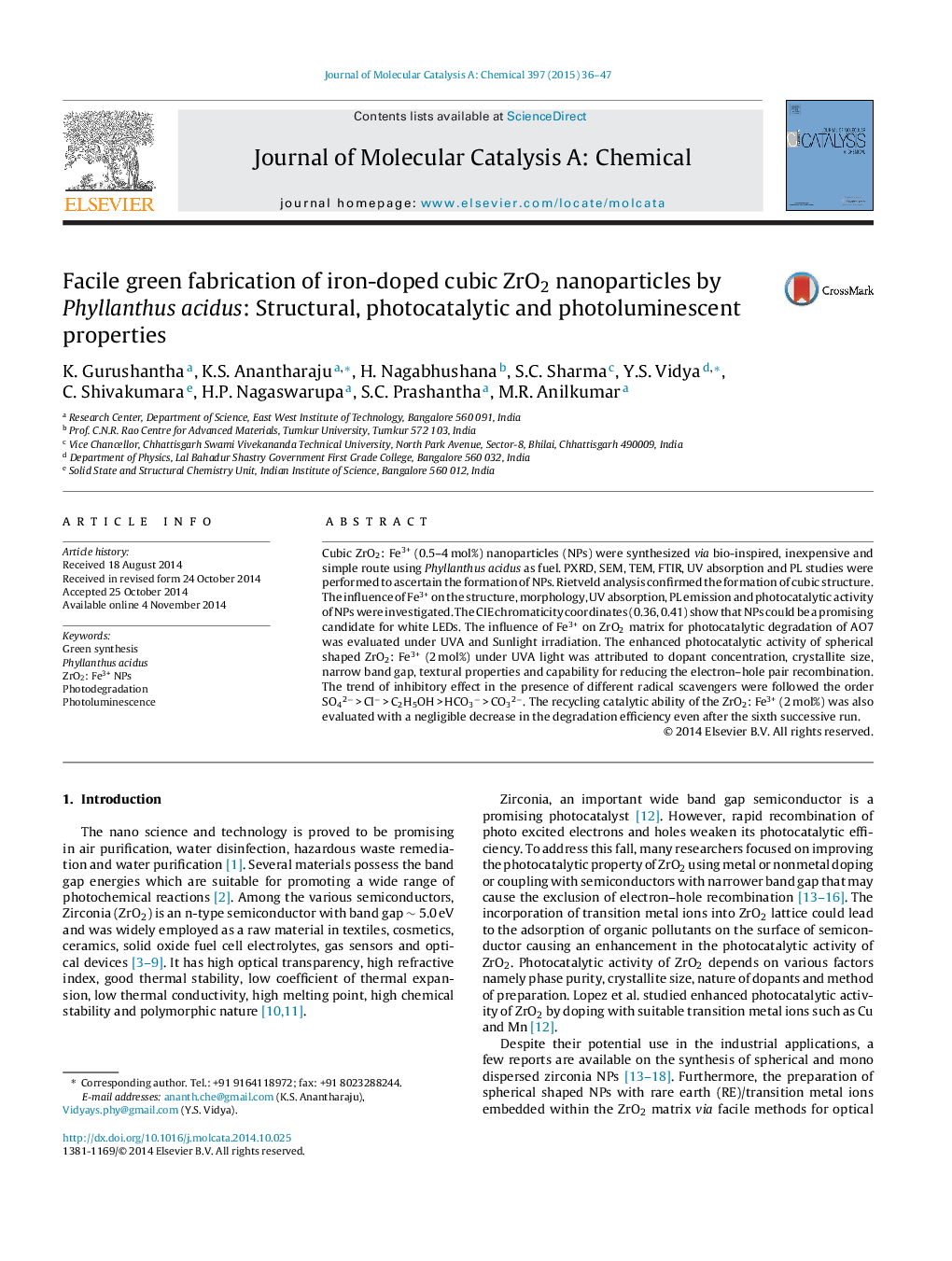| Article ID | Journal | Published Year | Pages | File Type |
|---|---|---|---|---|
| 65081 | Journal of Molecular Catalysis A: Chemical | 2015 | 12 Pages |
•ZrO2: Fe3+ NPs were synthesized by green route using Phyllanthus acidus leaves as fuel.•The NPs were characterized by PXRD, SEM, UV–Visible, FTIR, TEM and PL.•Photoluminescence and photocatalytic activities were studied and correlated for the degradation of AO7.•Cubic ZrO2 NPs doped with 2 mol% of Fe3+ showed superior photocatalytic activity.
Cubic ZrO2: Fe3+ (0.5–4 mol%) nanoparticles (NPs) were synthesized via bio-inspired, inexpensive and simple route using Phyllanthus acidus as fuel. PXRD, SEM, TEM, FTIR, UV absorption and PL studies were performed to ascertain the formation of NPs. Rietveld analysis confirmed the formation of cubic structure. The influence of Fe3+ on the structure, morphology, UV absorption, PL emission and photocatalytic activity of NPs were investigated. The CIE chromaticity coordinates (0.36, 0.41) show that NPs could be a promising candidate for white LEDs. The influence of Fe3+ on ZrO2 matrix for photocatalytic degradation of AO7 was evaluated under UVA and Sunlight irradiation. The enhanced photocatalytic activity of spherical shaped ZrO2: Fe3+ (2 mol%) under UVA light was attributed to dopant concentration, crystallite size, narrow band gap, textural properties and capability for reducing the electron–hole pair recombination. The trend of inhibitory effect in the presence of different radical scavengers were followed the order SO42− > Cl− > C2H5OH > HCO3− > CO32−. The recycling catalytic ability of the ZrO2: Fe3+ (2 mol%) was also evaluated with a negligible decrease in the degradation efficiency even after the sixth successive run.
Graphical abstractFigure optionsDownload full-size imageDownload high-quality image (211 K)Download as PowerPoint slide
